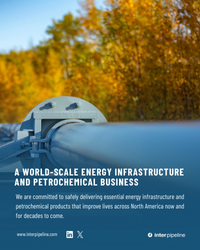New and expansion natural gas pipeline projects have been part and parcel of the shale production boom in the U.S. Northeast. In fact, Northeast gas production could not have reached anywhere near its current level and become a major natural gas supplier to the U.S. without the substantial addition of takeaway capacity out of the Marcellus/Utica shale areas. At the same time, the competition among pipeline developers jockeying to be in the right place at the right time has been fierce. And now, low natural gas prices and uncertainty about future production growth have only increased the competition---not all projects will make it to in-service. The risks are higher for big pipeline projects, but so are the stakes. These days, the overall risk tolerance among shippers and investors is low, especially among producers. So if you’re a producer, how can you make sure you don’t end up on the wrong side of a transportation deal? In today’s blog, we continue our walk-through of the RBN Pipeline Economics Estimation Model. We’ll follow up in a later installment with a real-world test and other ways to use the model.
In Part 1 of this series, we laid out some of the market dynamics that have led to the explosion of pipeline projects in recent years (and that are still to come) and the economics that have to work to support the new capacity. Then in Part 2, we began walking through our rule-of-thumb Pipeline Economics Estimation Model for estimating the cost of moving gas on a brand new pipeline by posing this hypothetical scenario: Your employer – a Marcellus producer – wants to know if it’s worth pursuing a brand new pipeline to move gas supply from the origination point in Pennsylvania to the high demand market in and around Boston, located about 500 miles northeast. A gaping $4.00/MMBtu price differential (on average for the year) has been the recent norm between the Tennessee Gas Pipeline Zone 4 pricing hub near your supply area and the Boston market. That means that over the course of a year, your company could sell its supply for an average of $4.00 higher if it could just get its gas to Boston, which would require building a new pipe – a good deal if it worked. But now your job is to figure out whether the benefits of a new pipe would outweigh the costs, long term. As we noted in Part 1, the delivery price minus the supply price and transportation cost has to be net positive over the life of any contract (from a present value perspective), or you might have made a bonehead move. So first you look at all the factors that could affect supply, demand and price on either end of the pipe and say you determine that the market would support moving 1.0 billion cubic feet per day (Bcf/d) of total supply on this hypothetical route. With that in mind, we walked you through the first step in our model—estimating the size of the pipe required to flow 1.0 Bcf/d of gas. That calculation involved some assumptions for industry norms around operating pressure (1,440 psi) and velocity of flow (20 mph). And using those factors, we concluded that you would need a 30-inch pipe to move that 1.0 Bcf/d across the 500 miles (to see a detailed discussion of the calculations involved in coming up with that, refer back to Part 2).
Now that you know the size of the pipe, next you need to know how much it will cost to build a pipe that size, and then how that will translate into your transportation rate. That’s where we’ll pick back up today with Steps Two and Three of the Pipeline Economics Estimation Model, estimating the cost and estimating the rates you might pay.
Step Two – Estimating the Pipeline Development Cost
Join Backstage Pass to Read Full Article









